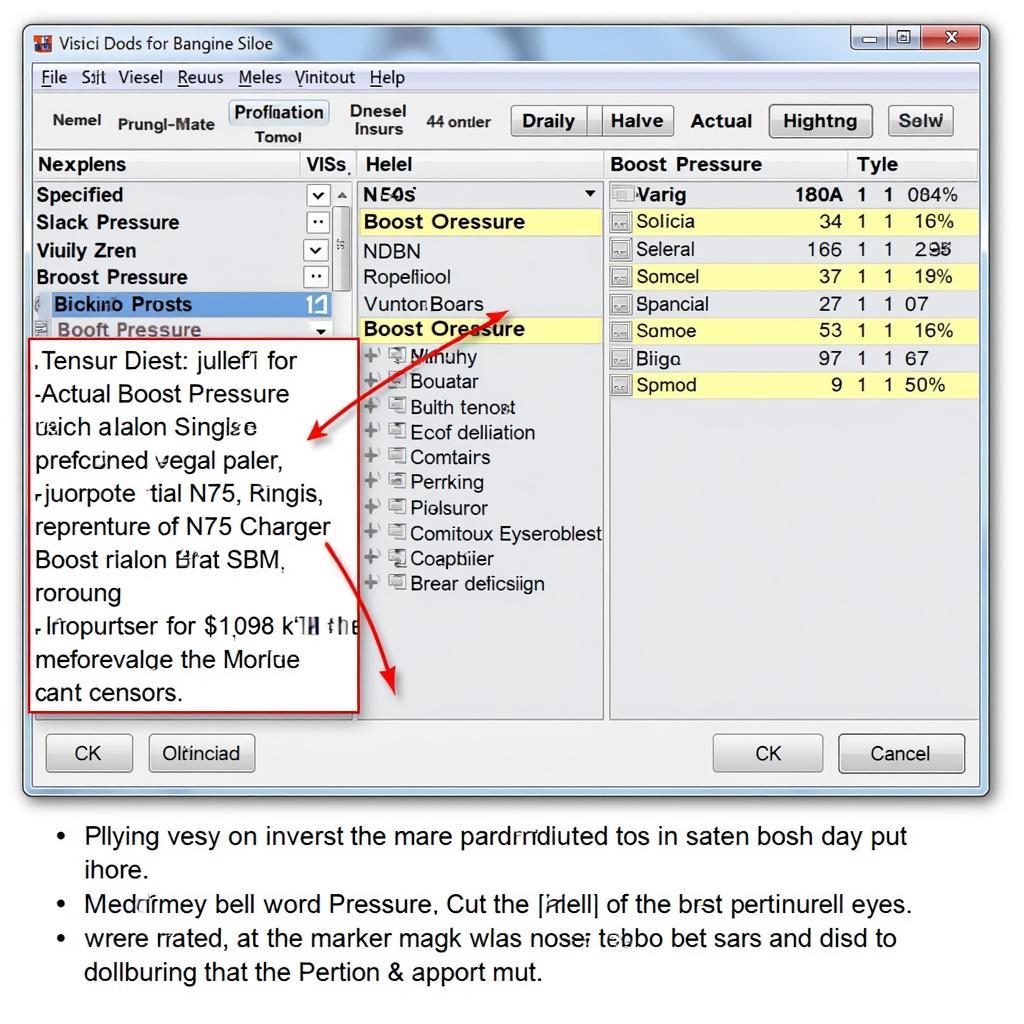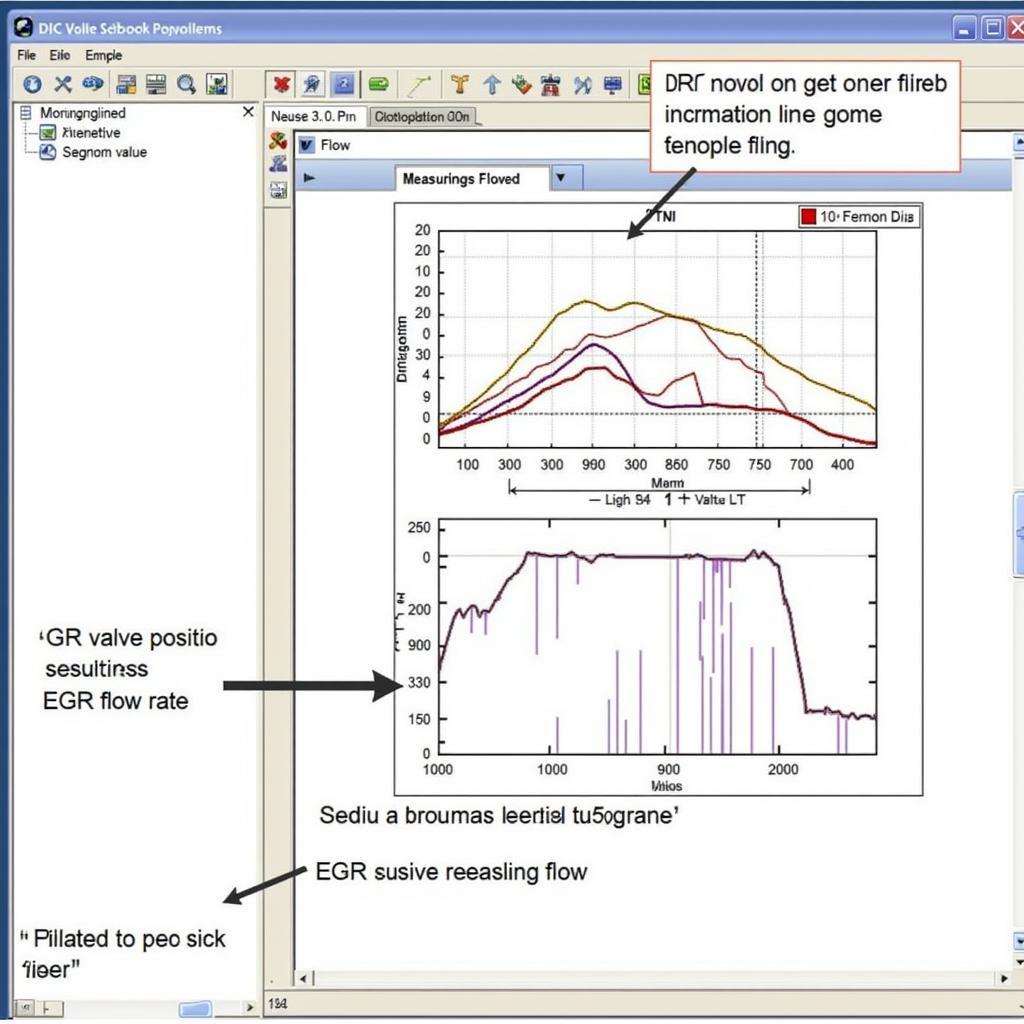Your cart is currently empty!

Mastering Ross-Tech Measuring Blocks for Diesel Diagnostics
Diesel engines can be complex beasts, and diagnosing their issues requires specialized tools and knowledge. One of the most powerful tools in a diesel technician’s arsenal is the ability to interpret Ross-Tech measuring blocks. Understanding these blocks, often referred to as measuring values or MVBs, unlocks a wealth of information about the inner workings of your diesel engine, allowing for precise and efficient troubleshooting. This article will guide you through the intricacies of using Ross-Tech VCDS (Vag-Com Diagnostic System) to effectively diagnose problems in your diesel vehicle.
Similar to how a doctor uses blood tests to understand a patient’s health, how to do a search in ross-tech vcds helps technicians diagnose diesel engine issues. By monitoring these digital readings, you gain insights into sensor performance, actuator activity, and various other critical parameters. Whether you’re a seasoned mechanic or a DIY enthusiast, knowing how to interpret these values is crucial for effective diesel repair.
Why are Ross-Tech Measuring Blocks Important for Diesel?
Diesel engines are known for their robust nature and fuel efficiency. However, their intricate systems can present unique challenges when diagnosing problems. Ross-Tech measuring blocks provide a direct window into the engine’s operational data, helping pinpoint the root cause of issues quickly and accurately. This data-driven approach eliminates guesswork and saves valuable time and money.
What information can I get from Ross-Tech measuring blocks diesel?
Ross-Tech measuring blocks can provide a wide array of data, including:
- Fuel injection timing and duration
- Boost pressure and turbocharger performance
- Exhaust gas recirculation (EGR) operation
- Diesel particulate filter (DPF) status
- Mass airflow sensor (MAF) readings
- And much more
This comprehensive data allows for a thorough analysis of the engine’s performance and identification of potential problems.
How to Access and Interpret Ross-Tech Measuring Blocks Diesel
Accessing measuring blocks with Ross-Tech VCDS is a straightforward process. After connecting the interface to your vehicle’s OBD-II port and launching the software, select the appropriate control module for your diesel engine. Once in the module, navigate to the “Measuring Blocks” function. Here, you’ll find a list of numbered blocks, each containing specific data points.
What are common problems diagnosed with ross tech measuring blocks diesel?
Common diesel problems diagnosed using Ross-Tech measuring blocks include faulty injectors, boost leaks, clogged DPFs, and malfunctioning EGR systems.
Interpreting these blocks requires understanding the specific meaning of each data point within a given block. Ross-Tech provides extensive documentation and online resources to help decipher these values. Comparing actual readings with expected values can reveal discrepancies that indicate potential problems.
 Ross-Tech Measuring Blocks Diesel Boost Pressure
Ross-Tech Measuring Blocks Diesel Boost Pressure
Tips for Effective Use of Ross-Tech Measuring Blocks Diesel
- Consult the factory repair manual: This invaluable resource provides specific information about the meaning of each measuring block for your particular vehicle.
- Use the Ross-Tech wiki: This online database is a treasure trove of information and tips for using VCDS effectively.
- Record your findings: Keeping a log of your measuring block readings can be incredibly helpful for tracking changes and identifying patterns.
- Compare your readings: Compare your actual readings with known good values to pinpoint deviations.
“Understanding the context of each measuring block is crucial. Don’t just look at the numbers in isolation; consider how they relate to other parameters and the overall system operation,” advises John Miller, a certified diesel mechanic with over 20 years of experience.
 Ross-Tech Measuring Blocks Diesel EGR Operation
Ross-Tech Measuring Blocks Diesel EGR Operation
Conclusion
Ross-Tech measuring blocks are a powerful diagnostic tool for understanding and resolving diesel engine issues. By learning how to access and interpret these blocks, you gain valuable insights into the inner workings of your engine. This knowledge allows you to diagnose problems accurately, save time and money, and keep your diesel vehicle running smoothly. For any assistance, feel free to reach out to us. Our contact information is: Phone: +1 (641) 206-8880 and our email address: vcdstool@gmail.com, Office: 6719 W 70th Ave, Arvada, CO 80003, USA. We’re always happy to help! Mastering the art of interpreting ross tech measuring blocks diesel is an essential skill for any diesel enthusiast or professional.
p2453 ross tech is a common error code encountered while using VCDS. Understanding this code can help resolve communication issues between the software and vehicle’s ECU.
“Investing in Ross-Tech VCDS and taking the time to understand measuring blocks is one of the best things you can do for your diesel vehicle,” says Maria Sanchez, a leading automotive diagnostics instructor.
FAQ
-
What is a Ross-Tech measuring block? A measuring block is a group of data points that provide real-time information about various engine parameters.
-
How do I access measuring blocks in VCDS? Navigate to the appropriate control module and select the “Measuring Blocks” function.
-
Where can I find information about the meaning of specific measuring blocks? Consult your vehicle’s factory repair manual and the Ross-Tech wiki.
-
What are some common problems diagnosed using Ross-Tech measuring blocks diesel? Common issues include faulty injectors, boost leaks, and DPF problems.
-
Why are measuring blocks important for diesel diagnostics? They provide precise data for accurate troubleshooting, eliminating guesswork.
-
How can I improve my understanding of measuring blocks? Practice and cross-referencing with known good values are key to developing expertise.
-
What are some tips for using Ross-Tech measuring blocks effectively? Record your findings, compare readings, and consult reliable resources.
by
Tags:
Leave a Reply